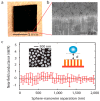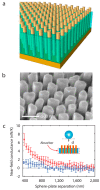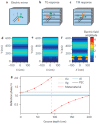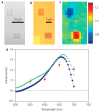Metadevices with Potential Practical Applications
- PMID: 31336634
- PMCID: PMC6680820
- DOI: 10.3390/molecules24142651
Metadevices with Potential Practical Applications
Abstract
Metamaterials are "new materials" with different superior physical properties, which have generated great interest and become popular in scientific research. Various designs and functional devices using metamaterials have formed a new academic world. The application concept of metamaterial is based on designing diverse physical structures that can break through the limitations of traditional optical materials and composites to achieve extraordinary material functions. Therefore, metadevices have been widely studied by the academic community recently. Using the properties of metamaterials, many functional metadevices have been well investigated and further optimized. In this article, different metamaterial structures with varying functions are reviewed, and their working mechanisms and applications are summarized, which are near-field energy transfer devices, metamaterial mirrors, metamaterial biosensors, and quantum-cascade detectors. The development of metamaterials indicates that new materials will become an important breakthrough point and building blocks for new research domains, and therefore they will trigger more practical and wide applications in the future.
Keywords: detectors; metamaterials; mirrors; nanobiosensors; near-field energy transfer.
Conflict of interest statement
The authors declare no conflict of interest.
Figures















References
-
- Ishihara K., Suzuki T. Metamaterial Demonstrates Both a High Refractive Index and Extremely Low Reflection in the 0.3-THz Band. J. Infrared Millim. Terahertz Waves. 2017;38:1130–1139. doi: 10.1007/s10762-017-0416-8. - DOI
-
- Yoo S., Park Q.-H. Metamaterials and Chiral Sensing: A Review of Fundamentals and Applications. Nanophotonics. 2019;8:249–261. doi: 10.1515/nanoph-2018-0167. - DOI
-
- Gholipur R., Bahari A. Preparation and Characterization Silver/Zirconium Nickel Oxide Nanocomposites with Negative Electromagnetic Parameters. Opt. Laser Technol. 2017;91:166–174. doi: 10.1016/j.optlastec.2016.12.034. - DOI
-
- Fegadolli W.S., Pavarelli N., O’Brien P., Njoroge S., Almeida V.R., Scherer A. Thermally Controllable Silicon Photonic Crystal Nanobeam Cavity Without Surface Cladding for Sensing Applications. ACS Photonics. 2015;2:470–474. doi: 10.1021/ph5004863. - DOI
Publication types
MeSH terms
Grants and funding
LinkOut - more resources
Full Text Sources

